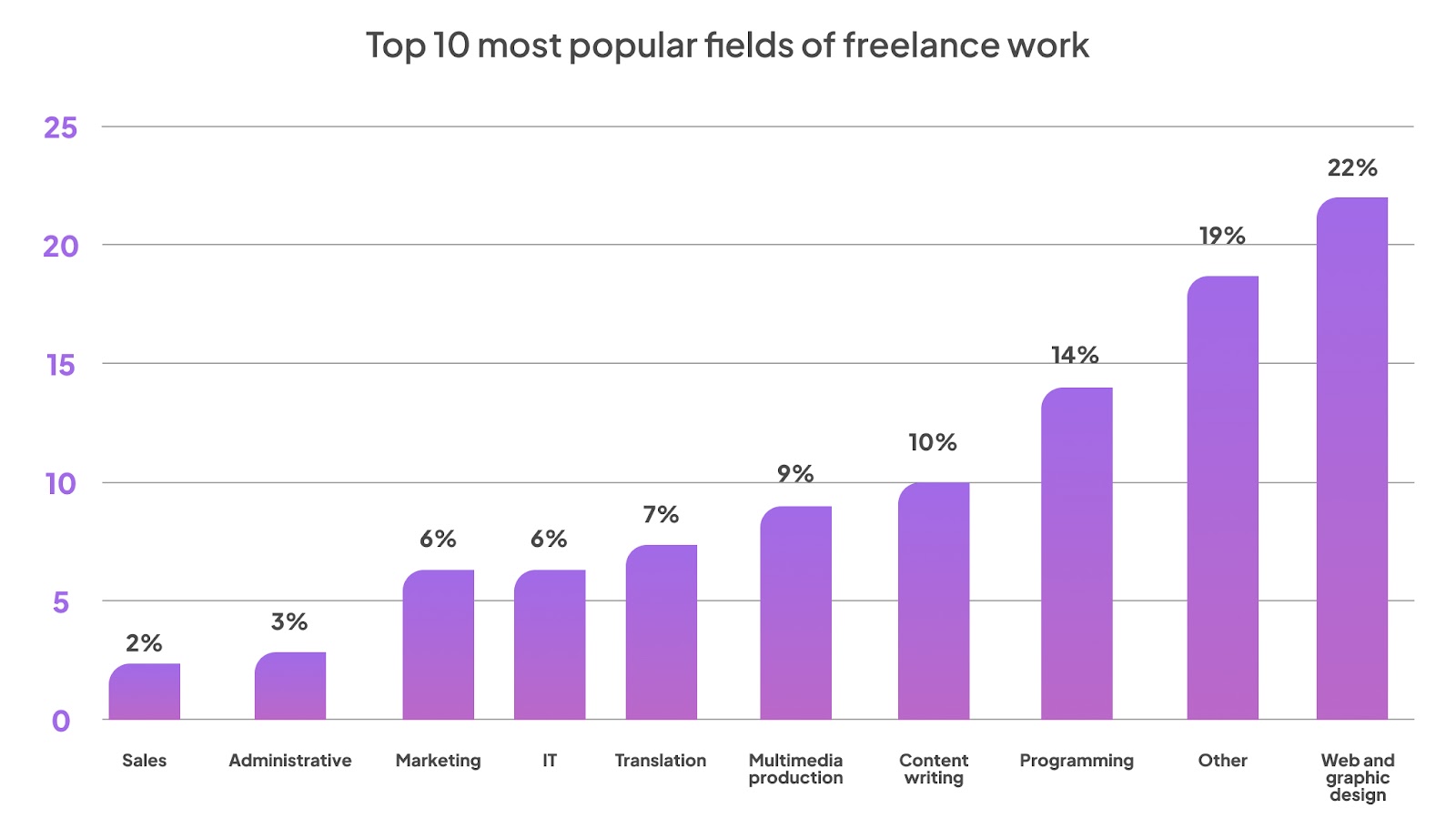Offshore talent vs. freelancers: what’s best for your business?

Offshore talent vs. freelancers: what’s best for your business?
The way we hire has changed.
With an estimated 1.57 billion freelancers globally, and the gig economy is expected to reach $455 billion in the coming years1, businesses have more flexible hiring options than ever before. Platforms and digital tools have made it easier to access freelance workers on demand, while offshore talent solutions are unlocking long-term value and scalability for growing teams.
But with more options comes more complexity - and, in some cases, legal uncertainty. Recent cases like Joanna Pascua, a freelance worker whose misclassification led to legal consequences for the Australian business that engaged her, have brought renewed attention to how freelance arrangements are structured, prompting businesses to think more carefully about compliance and risk.
So, should you hire a freelance worker for short-term needs, or invest in offshore talent for greater consistency and impact?
In this blog, we break down the key differences, benefits, risks, and emerging trends to help you make the right decision for your business.
What is the gig economy?
The gig economy refers to a labour market made up of short-term, contract-based, or freelance work - typically facilitated through digital platforms. Think of it as “work on demand”: tasks or projects are completed in exchange for payment, without the structure of a traditional job.
Platforms like Upwork, Fiverr, and Toptal have made it easy for businesses to connect with freelance professionals around the world in minutes. It offers maximum flexibility for workers and quick access to talent for businesses without the usual overhead of employment contracts, benefits, or onboarding.
Take Upwork, for example. A business can post a brief to design a landing page or write SEO content. Within hours, they might receive dozens of proposals from freelancers worldwide. Once hired, the freelancer completes the task, gets paid, and may move on to the next gig - often with little to no long-term engagement or integration with the business.
Best for:
- Creative or one-off projects (e.g. logo design, article writing)
- Campaign-based work with defined timelines
- Roles that don’t require deep business integration or long-term commitment
To make it easier, we have broken up this section to explain popular examples of gig platforms and gig jobs or employment opportunities.


What is offshore talent?
Offshore talent refers to full-time remote professionals based in another country, typically hired through a trusted outsourcing partner. Unlike freelance workers, offshore talent is integrated into your team structure, aligned with your business hours, and committed to long-term success within your organisation.
This model has become increasingly popular among small to mid-sized businesses looking to scale sustainably. Instead of recruiting locally (where costs and competition are high) companies are accessing skilled professionals overseas to fill roles in operations, marketing, finance, customer support, and more.
The main difference? Offshore talent isn’t transactional. These professionals become an integral part of your team. They follow your processes, attend your standups, and are managed just like your onshore staff - with better cost efficiency and global reach.
Best for:
- Long-term team expansion
- Operational or recurring roles that need consistency
- Fast-scaling businesses looking to reduce cost
Read more: Why more businesses are outsourcing – and winning
Offshore talent vs. freelancers? Weighing the pros and cons
When deciding between freelancers and offshore professionals, it's important to consider both the business and worker perspectives. Each model offers different strengths and trade-offs depending on your needs, goals, and resources.
Freelancing remains an essential part of the modern workforce, enabling lean startups and large enterprises alike to move fast, access diverse talent, and innovate on demand. The key is knowing when flexibility outweighs consistency and where the limits lie.
Risks of gig economy
While gig work can be fast and convenient, it may fall short for roles involving high-stakes responsibilities or secure data access. Here are some of the most common risks businesses face when hiring gig workers instead of offshore talent through a structured outsourcing model:
1. No background checks
Freelancers on platforms like Upwork or Fiverr are often onboarded without formal vetting. There’s no guarantee of background checks, verified credentials, or professional references. In contrast, offshore professionals hired through outsourcing partners are usually screened through multi-step processes, including education checks, police clearances, and previous work validation.
2. Data and device security gaps
Many gig workers or freelancers use personal or shared devices, with little to no oversight on how client data is accessed or stored. This introduces risks around compliance, data leakage, or unauthorised system access. By comparison, outsourcing firms typically enforce ISO-aligned security standards, equip staff with company-issued devices, and deploy monitoring tools that ensure secure, controlled access to client systems.
3. No built-in quality control
There are no standardised QA checks for gig work. Freelancers may juggle multiple clients, deliver inconsistent results, or ghost mid-project. Outsourcing providers, on the other hand, often have built-in quality assurance processes from regular check-ins and performance tracking to structured onboarding and dedicated client success managers.
4. No service guarantees or escalation paths
If a freelancer fails to deliver or a dispute arises (missed deadlines, ransom demands for work release, or disputes over revisions), businesses often have few formal options for resolution. Unlike outsourcing partners who offer service guarantees, structured support, and escalation channels, freelance platforms tend to provide limited protection - leaving you to navigate conflict alone.
5. Compliance and taxation blind spots
Freelancers may not be registered taxpayers in their country of origin, creating compliance grey areas for international clients. Outsourcing companies handle this on your behalf - ensuring legal employment status, local tax compliance, and adherence to labour laws in the country where the talent is based. Outsourcing partners ensure offshore professionals contribute to their local economies and communities, which is an important part of building ethical, sustainable global teams.
6. No cultural or operational alignment
Gig workers often operate independently and may not adapt well to your internal tools, tone of voice, or working style. Offshore professionals, however, are typically embedded in your team - joining meetings, using your systems, and aligning to your processes, brand, and culture.
Risks of offshore talent
While offshore talent offers structure, continuity, and long-term value, it’s not entirely risk-free. Like any model, success depends on execution - and a big part of that comes down to choosing the right provider. Here are a few considerations to keep in mind:
1. Cultural misalignment
Without proper onboarding or context, offshore team members may struggle to adapt to your company’s tone, tools, or pace, especially in communication-heavy roles.
2. Time zone friction
While many outsourcing partners align talent with your working hours, there can still be occasional delays or handover challenges, especially across different time zones.
3. Higher upfront investment
Hiring offshore talent through a structured partner may require more upfront time for onboarding, alignment, and integration. But this early investment pays off in stronger retention, better cultural fit, and long-term performance.
The key takeaway is that these risks are manageable - especially when you partner with a provider who prioritises onboarding, culture, and operational alignment.
If you're exploring offshore hiring, avoid common pitfalls by reading our guide on the biggest mistakes when hiring offshore.
Making the right choice for long-term growth
The freelance model offers speed and flexibility - but as businesses scale, many are turning to offshore talent for the consistency, integration, and operational control it brings.
If long-term growth, operational alignment, and talent retention are top priorities, offshore hiring provides a stronger foundation. For short bursts of expertise or agile needs, freelance support may be the faster path.
The bottom line: It’s not about choosing one over the other - it’s about choosing the model that best supports your goals, timeline, and team dynamics.
Want to know what’s shaping the future of offshore hiring? Explore how AI and service tech are transforming the way businesses scale.
References:
[1] The Gig Economy Boom: Opportunities and Challenges for Freelancers in 2025 (thecompany.ph)
[2] 2022 Global freelancer income report: The ongoing rise of the freelance revolution (payoneer.com)
[3] Philippines gig economy: The insights and risks (microsourcing.com)
[4] The gig economy: a liquid workforce (microsourcing.com)
[5] This Filipino woman struck a blow against Australian businesses 'exploiting' offshore workers (abc.net.au)
[6] Offshoring vs. Freelancing: Which is Better for Your Business? (remoteacc.com.au)
[7] Outsource or Freelance? Key Factors to Consider (linkedin.com)
[8] Find the Talent You Need by Freelancing, Outsourcing, or Offshoring (penbrothers.com)
[9] Legal Challenges of Hiring Overseas Freelancers (dbaadvisory.com)


